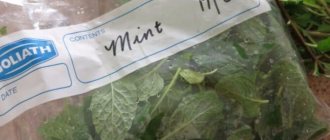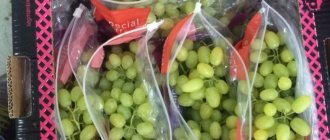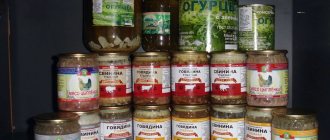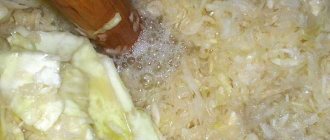An important issue for many winegrowers who are involved in breeding is the preservation of grape vines until spring. This article will discuss various options for storing cuttings at home. Choosing the right method and fulfilling all conditions affect the quality storage of grape cuttings. This article provides diagrams and step-by-step instructions.
Why are cuttings prepared? By rooting cut vines in the spring, many gardeners propagate their favorite grape variety in this way to increase its yield. At the same time, many are engaged in viticulture as a business, preserving and propagating many magnificent varieties. Because grapes are a capricious bush, sometimes after hard winters they can die, i.e. cuttings will help restore the desired culture.
How to prepare cuttings for storage
Before putting the cuttings away for the winter, they need to be disinfected and pathogenic bacteria and infections that will destroy the vine destroyed. It should be disinfected immediately after cutting.
- To do this, as an option, you can prepare a solution in a glass of water, dilute 5 grams. copper sulfate. You need to generously treat the chibouks and let them dry. This way you will protect against the development of fungi and diseases in winter.
- The next step is soaking. It is necessary to saturate the vine with moisture, because... Over the long winter period, the cuttings may dry out. Or the kidneys may die due to loss of moisture. You can soak for up to 24 hours.
- Dip the chopped vine thoroughly into a light pink solution of potassium permanganate for the next disinfection.
- To ensure that the cuttings lose less moisture, some winegrowers treat the edges of the cuts with paraffin. But this is at the discretion of everyone, because... the capillaries of the cut are tightened, and the moisture does not evaporate significantly.
- After all stages, sort, label and collect into bundles by variety. It is better to use plastic tags to write the name of the variety, because... Moisture can cause mold to form, which will damage the paper.
- Each bunch should be placed in a plastic bag, or wrapped in film and stored in a cool place.
You need to store the cuttings immediately, because... In the fresh air, moisture loss occurs, which can reach up to 2%. The cuttings should not be placed close to the fruit, because Ethylene released by fruits harms the kidneys and tissues of the chibouks.
It is advisable to form bundles from 50 to 90 pieces.
Reanimation of chibuks
I have 100 cuttings of 12 grape varieties, and for a month they lay in a cold room, uncovered. I suspect that some of the moisture has evaporated from them, so before storing them, I will cut off the lower ends of the shanks with pruning shears.
Beginning gardeners often ask how to determine the upper and lower ends of a chibouk. It's simple: the peephole always looks towards the upper end, and a fragment of a stepson or leaf often remains under the peephole. Even if these remnants are not there, you will see where they are attached.
While cutting off the ends, I noticed that the wood of the chibouks is green, which means they are alive and suitable for rooting. Now you need to restore their moisture level. To do this, I filled a bucket to a third of the height with water and lowered the lower sections of the chibouks into it. So they will stand for a day in a cool room, and then I will dry them and pack them in film.
If I now bring them into a living room for a day, there is a danger that in the warmth they will begin to awaken.
Optimal storage conditions
The most suitable temperature for storing grape cuttings is from 0 to 4 degrees Celsius, while the air should contain up to 90% humidity. There are no requirements for keeping them in complete darkness. But because Since the sun's rays activate internal life processes, it is advisable to keep them in a dark place.
To prevent rot and other diseases from developing, it is advisable to ventilate the storage area of future seedlings.
If the temperature of the content fluctuates and is not maintained, this will affect the deterioration of the quality of the pipes. Because they will spend more nutrition to maintain the desired atmosphere in the cutting. If the temperature drops, it can damage the eyes and capillaries.
Also take care of mouse poison. This is also important to protect the vines during winter storage.
Tips and tricks
The chopped vine will be stored and grown better in the future if you follow some recommendations:
- Rooted seedlings are planted at the end of April. First dig up the soil and add fertilizer to the hole.
- The vine is installed at an angle of 45 degrees with a distance of 15-20 cm, so that several buds are above the ground. Then they fill it with soil, water it, compact the soil and cover it with film.
- The film is removed when the threat of overnight spring frosts has passed. This is how the chibouks develop and ripen faster during the summer season. At the same time, the grapes withstand the winter better, and the next year they produce their first fruits.
Preparing and storing planting material in winter is a rather labor-intensive and complex process, but this is how you will be able to grow new grape bushes that will delight you with a bountiful harvest.
Popular methods for storing grape cuttings until spring
Each winegrower chooses a more convenient way to overwinter cuttings. Most often, cuttings are stored in the cellar in winter, because... there you can achieve the most optimal conditions of temperature and moisture.
Another common way to store grape cuttings in winter is to store them in a trench. But the downside is the impossibility of influencing and controlling the early start of the growing season of buds and foliage.
One of the common options for storing cuttings in an apartment is to use a fruit storage chamber in the refrigerator. To do this, it is advisable to select a small number of strong chibouks measuring about 45 cm.
Each method will be described in more detail below.
How to properly preserve cuttings before planting
Soaking and disinfecting the chibouks is not always enough to preserve them until spring. Each method of storing grape cuttings requires constant monitoring of external conditions. An exception is storing vines in a trench.
This applies to both storage in the refrigerator and in the cellar. After all, timely detection of a defect will help protect the remaining chibouks from damage.
Excessive moisture is much more dangerous than lack of moisture
When there is insufficient moisture, the drying process begins. Often it is enough to spray moisture with a sprayer on the cuttings and the place in which they are stored.
Photo used as illustration. Source Yandex pictures
In contrast to this situation, let’s consider what happens when there is excess moisture and poor ventilation. It is in this environment that fungus and mold begin to grow very actively.
If you notice the first signs of damage to the cuttings, immediately treat them with vitriol liquid.
To do this, prepare a 3% composition of copper or iron sulfate and treat the affected areas with a brush or cloth.
To effectively preserve cuttings, it is advisable to inspect them once a month so as not to get a “surprise” in the spring. Because The key to good germination of cuttings in spring is prevention and proper storage of the vine in winter.
You need to very carefully inspect the vine for rot and promptly treat the affected areas, because rot makes the cutting weak and subsequently leads to death.
Main advantages of the method
Planting cuttings is the most effective way to propagate grapes, which has many advantages:
- there is no risk of phylloxera infection;
- cuttings are a cheap and reliable way to obtain planting material;
- a well-rooted bush allows you to preserve the vine in winter;
- the method is very simple and economical, which makes it one of the most popular among beginning gardeners.
But we must not forget that a vineyard grown with the help of chibouks will produce a harvest after quite a long time.
How to store grape cuttings until spring
After we have chosen the method of storing cuttings, we need to think about how we will store them. After all, it is important to protect the cuttings from drying out. Let's consider the materials in which cuttings can be stored:
Boxes
If you use boxes to store grapes, follow these recommendations. Chibouks are laid out in this container in layers, sprinkled with sawdust, sand, etc.
The boxes need to be waterproofed to reduce moisture loss. To do this, the walls are often lined with film or cardboard.
It is advisable to use medium-sized boxes. The film is a good waterproofing material that perfectly retains moisture and prevents drying out. However, stagnation of air and the development of rot must not be allowed.
Textile
This material does not allow the vine to be over-watered. However, the problem with fabric is that it can encourage fungus and rot. This problem is solved by wetting the fabric in a disinfectant solution of 3% vitriol (any).
Sand
Also a commonly used material. Excellent retention of grapevine moisture. It's easy to keep moisture levels under control. To do this, you can check with your hand for friability.
Photo used as illustration. Source Yandex pictures
Moss
Convenient material for storing grapevine cuttings. Excellent retention of optimal moisture. No deficiencies found. Moss has disinfectant properties, but it is too difficult to obtain in sufficient quantities. Peat can serve as a replacement for moss.
Photo used as illustration. Source Yandex pictures
Sawdust
One of the simplest and cheapest materials. The most suitable are softwood sawdust and a fabric bag. Some winegrowers use PE bags, but in this option there is a high risk of rot and bacteria developing more intensively.
In this form, to preserve the vines, they are folded into bunches and buried in sawdust. The method is used when it is not possible to control the cuttings. But! Still, the humidity needs to be controlled and the wet substrate needs to be stirred and shaken periodically.
You can also read interesting articles on pruning grapes in the fall, pruning old neglected grapes, and trellises for grapes
Where to store cuttings in winter
Consider the most common effective and optimal places for storing grape cuttings in winter.
In a refrigerator
As a rule, the vine is cut to 40 cm for storage in the refrigerator, because Refrigerator size is limited. One of the disadvantages is also storing a limited amount of vines. However, the storage temperature and condition of the pipes are always under control.
The vine is wrapped with a material of natural composition. Moreover, you need to wrap no more than half of the cutting. Then they put a PE bag on top, the ends need to be left out a little so that they peek out. This is done to prevent rot from developing on the vine and infecting the remaining cuttings.
For prevention, you need to treat the vine monthly in a light solution of potassium permanganate.
Synthetic fabric is not suitable.
In the cellar
The room must be dry and not susceptible to freezing in severe frosts. However, an important condition is the ability to regularly ventilate the cellar or basement to prevent the formation of fungal infections and mold.
Most often the vine is laid out in a vertical position. You can use a shallow container, pour about 10-15 cm of sand into it, and lightly moisten it with water. Then the chibouks are stuck into the sand, as in their position in nature, without turning them over. Maintain a distance between the cuttings so that they do not touch. Check the moisture content of the sand every month and moisten it. Control the top of the vine.
The next method of storing cuttings in the basement is the horizontal arrangement of the pipes. To do this, the vine is laid in layers, sprinkled with sand or moss. It is also necessary to control moisture; for this you need to inspect the container and, to preserve and retain moisture, it is advisable to cover it with PE film on top. Also monitor the condition of the cuttings for any rotting.
During the storage period, you need to change the position of the upper shanks to the bottom twice, and the lower ones to the top.
"Bulgarian" storage method
This method involves storing the cuttings in water. Clean water up to 4 cm is poured into the bottom of the container. Here the winegrower must constantly monitor the process. Because water will be regularly consumed by the cuttings and evaporate and must be constantly added. During winter, you need to completely replace the water once.
Storing in river sand at home
River sand contains many microbial parasites. Therefore, before using this material, it must be calcined. This will help reduce risks to a minimum. We tie the prepared grape vines into bunches of up to 8 vines. We spread the bottom layer with sand and arrange the bunches on it.
We moisten the bottom layer in advance. After this, fill it with a second layer of sand and moisten it a little. The sand will have to be soaked sometimes, because... it dries out. This is done when removing the pipes from the box.
Storing grapevines in snow
Regions where snow falls from autumn to spring can use this method. After all, inside the snow there is a minimum positive temperature, which allows you to preserve the chibouks.
For this you need PE bottles. They will prevent excessive wetting and freezing of the vine. For each bunch of chibouks you need to prepare two bottles. The length of the pipes should fit into the bottle.
Cut off the bottom of both PE bottles. We put a bottle on both sides of the bundle and seal it, one into the other. To prevent diseases and maintain humidity, you can put a sterile cloth or bandage soaked in a solution of potassium permanganate inside. Closing the bottles
The snow must be compacted and at least 10 centimeters high. Bottles are placed on this “pillow” and snow is buried on top. The length of the vine with this storage method is usually about 40 cm.
“Cases” with chibouks are laid out evenly on it. The bottles are covered with snow as carefully as possible. For this method, only chibouks no larger than 40 cm are suitable.
Storing cuttings in a trench or special pit
For this method you need to choose the right location. It should be mostly in the shade and without stagnant water. Those. have a good slope or drainage. A trench is dug 90 cm. To prepare it, you need to have slaked lime and river sand (calcined). We will treat the edges of the pit with lime to disinfect micro infections and parasites. If the sand is not calcined, mold will grow in it.
Photo used as illustration. Source Yandex pictures
We lay a compacted layer of sand on the bottom. We lay out the vine. We again cover the top with a layer of sand and then snow. This will allow you to maintain optimal temperature conditions.
Storing cuttings in pots or buckets of soil
The method of storing cuttings in a trench is similar, but with this method the vine is under the supervision of the winegrower and constant control.
Cut grapes are placed in large buckets, containers, etc. and lay the soil as fluffy as possible. The advantage of the method is that when the temperature increases above 4 degrees, the growth of the chibouks will begin and they will be able to take root without unnecessary traumatic transplantation
We also recommend reading interesting articles about the propagation of maiden grapes and the types of maiden ornamental grapes
Blank
The success of further propagation and obtaining a good harvest will depend on how the planting material is properly prepared.
During harvesting, certain rules must be taken into account:
- cuttings must have 4 developed buds;
- the best time to prepare the chibouks is autumn, when the vineyard is pruned after the leaves have fallen;
- the preparation of chibouks is carried out only from well-ripened grapevines, when they acquire a brown color;
- You can save grape stems until spring only those that were obtained from the middle part of the vine;
- the cutting must have a diameter of at least 4-6 mm, be undamaged and uniform in color.
Deadlines
Cuttings are prepared in the fall from vines that have sprouted over the summer, are fully mature, have a uniform color and crackle when bent.
Choosing the right vine
You cannot store grape seedlings in the winter before planting if the vine is very thin, not fully matured, damaged by insects or diseases, or if the shoot thickness is more than 10 mm.
Proper cutting of cuttings
Cuttings must be prepared taking into account the basic requirements, and they are as follows:
- You only need to cut off the shoots that bear fruit;
- you need to cut long shanks - at least 150 cm;
- cuttings must be even;
- there should be no stepsons, leaves or tendrils on them;
- a mandatory requirement is the presence of 2-3 living buds and at least 5 internodes;
- it is necessary to trim only with clean and sharp pruning shears or garden shears;
- pruning is done from the bottom up.
Errors when storing cuttings
The main points that beginners violate are untimely control of humidity and lack of control over a thorough examination for fungal infections.
Also control the desired temperature to inhibit root germination.
If the temperature rises closer to 10 degrees Celsius, the process of callus and root formation will be activated, which will cause greater moisture consumption and lead to dehydration and waste of nutrients.
Exhausted cuttings lose their suitability for rooting.
Also, when preparing vines for storage, take into account the characteristics of the grape variety, because Storage in winter affects germination in spring.
Deadlines
Most gardeners prefer to harvest vines in the fall. The approach is correct, and although you have to tinker with storage facilities, the result justifies the expense and hassle. The survival rate of such shoots is higher, therefore, future seedlings turn out strong and healthy. Spring green chibouks are often frozen, with damaged buds, which is why the survival rate is very low.
It is recommended to combine the obligatory autumn pruning of bushes and the preparation of chibouks. Firstly, the crop receives less stress, and secondly, the gardener’s time is saved. The optimal time for pruning is after leaf fall, before frost.
During this period, a significant supply of nutrients and moisture has already accumulated in the shoots. There is no need to rush into harvesting, as there is a long period of dormancy ahead of the crop, when the plant’s basic life processes are inhibited.
In the southern regions, cuttings are harvested at the end of November or at the beginning of December, in the middle zone, in the Moscow region - in the last days of October. Due to special climatic conditions, winegrowers in the North-West, Urals, and Siberia begin cutting vines much earlier. In the Leningrad, Pskov, and Vologda regions, as well as in the regions beyond the Urals, frosts are not uncommon as early as October. So gardeners focus on the climate and weather of a particular area, trying not to rush, but not to be late.











